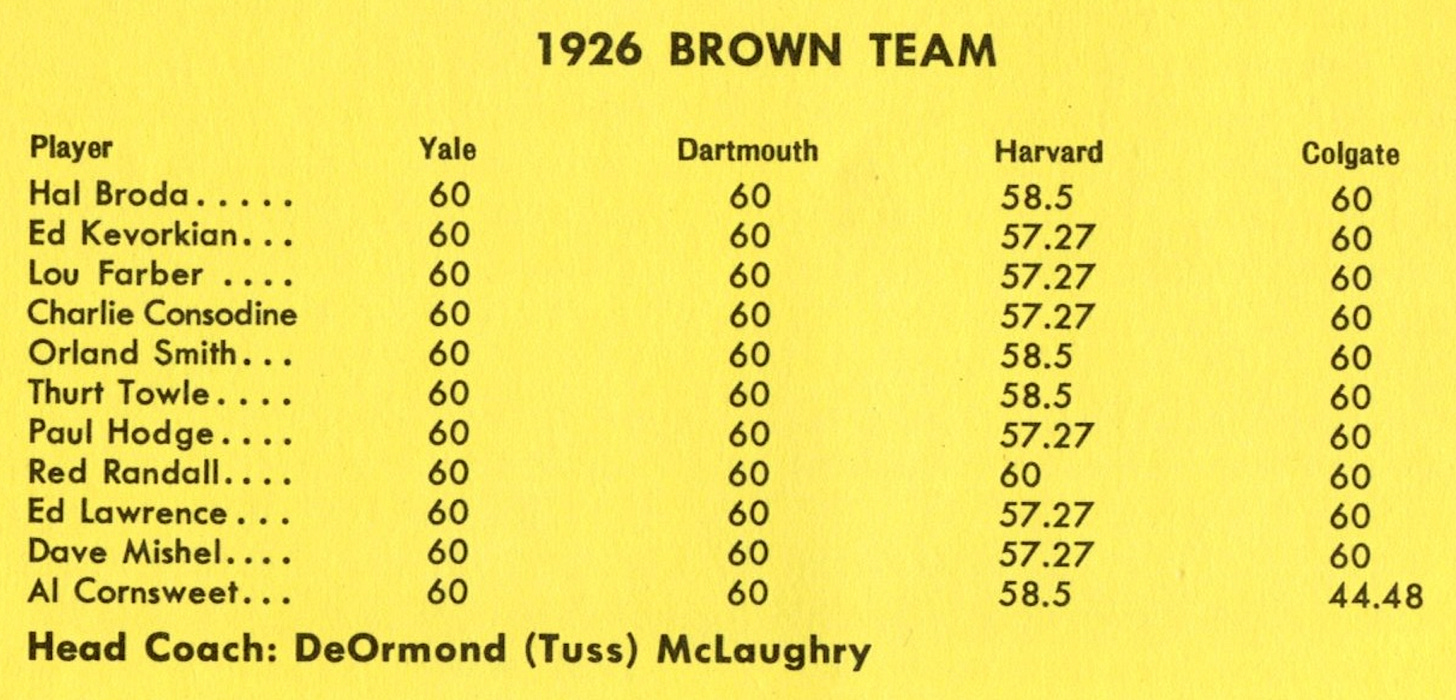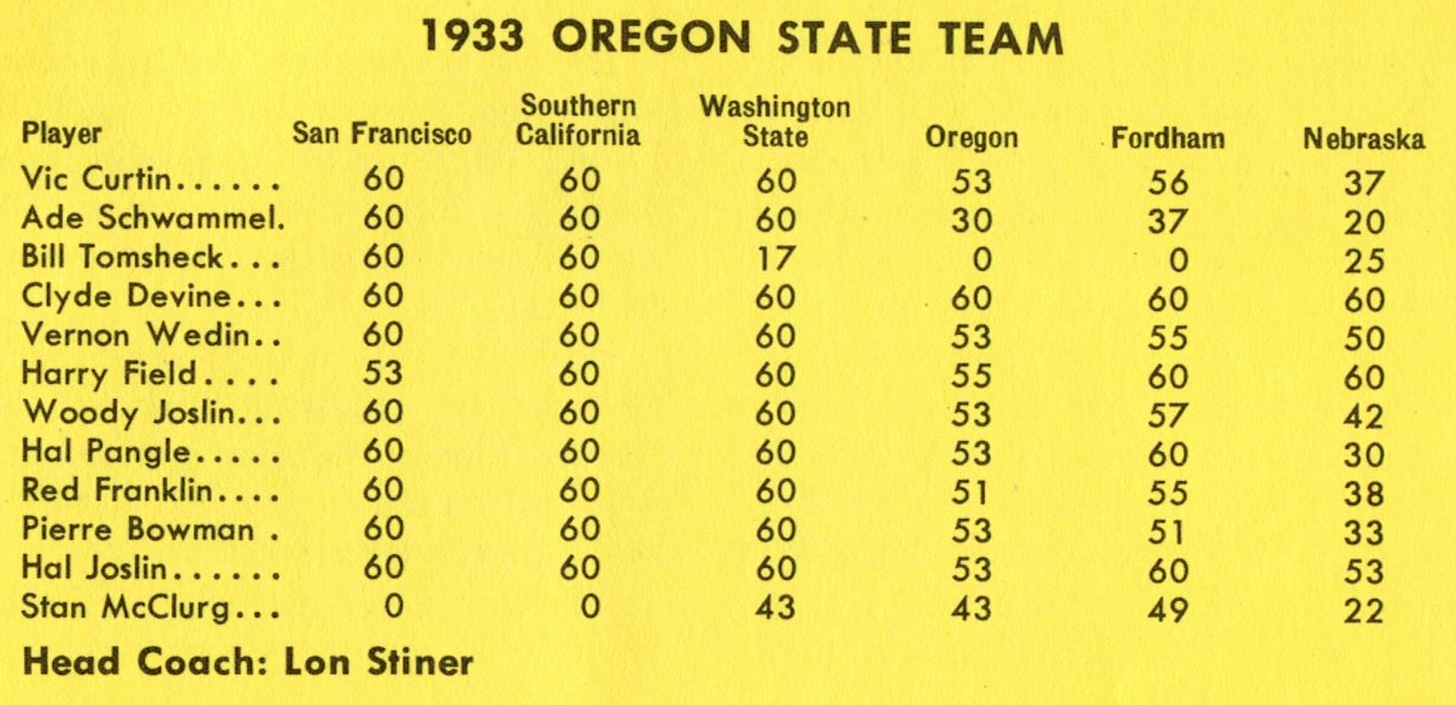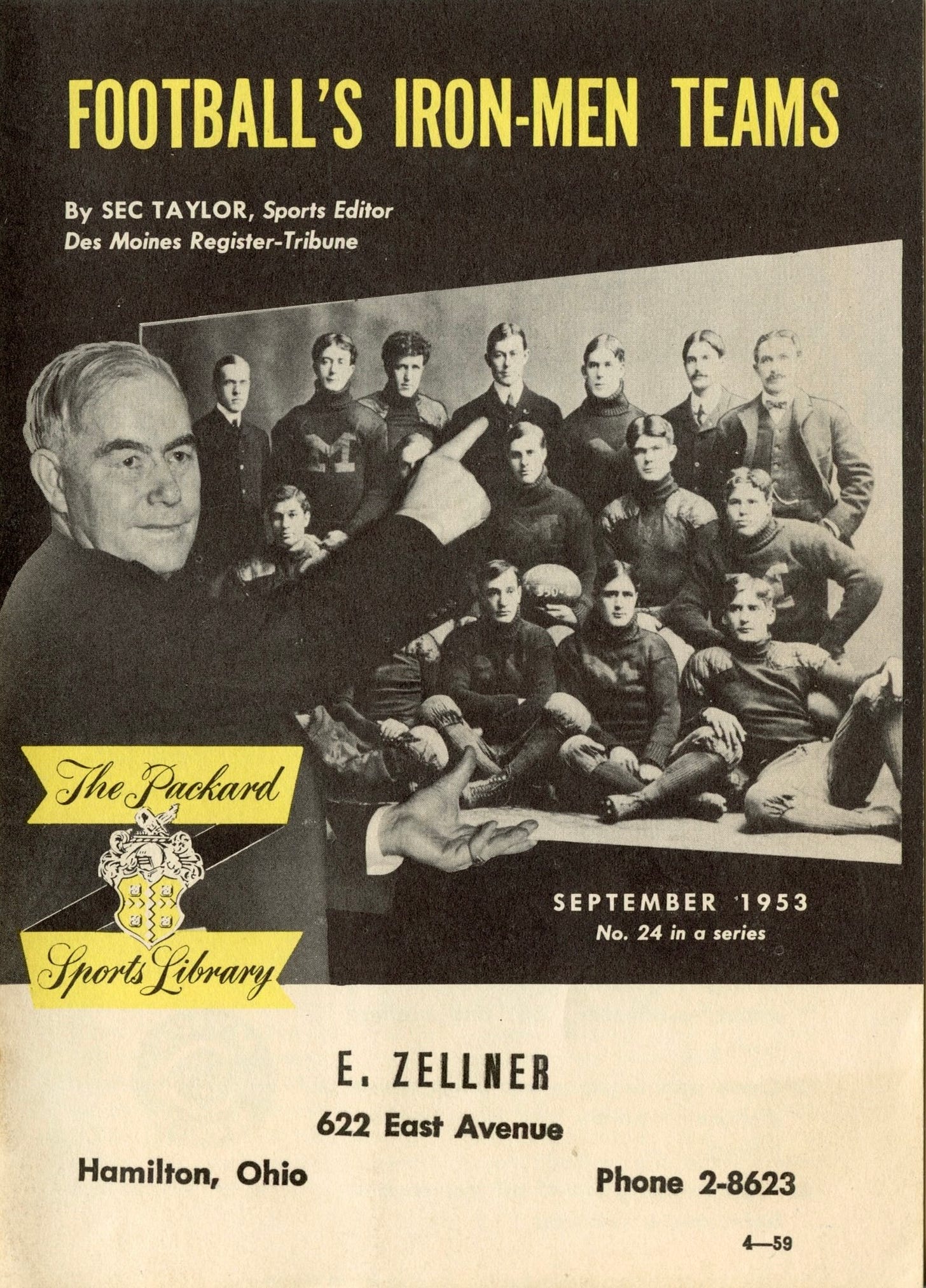The Packard Sports Library and Iron Men Football Teams
Just as many college football programs that dropped football during World War II struggled to restore their programs and eventually faded away, the same was true of several car brands. Packard was once a high-premium American brand that moved downmarket during the 1930s to gain volume. During the war, they produced Merlin engines for P-47s and V-12 engines to power PT boats. Delayed in introducing all-new models after the war, the brand slowly faded before being acquired by Studebaker and closing its doors in 1962.
Like many auto brands in the 1950s, Packard viewed sports-oriented marketing as a means to appeal to men, who were the primary decision-makers for automotive purchases. From 1951 to 1957, the brand published the Packard Sports Library, consisting of ten 16-page booklets per year written by sportswriters with newspapers nationwide. Their chief service manager and marketers believe the pamphlets ensured:
Service promotion messages are delivered with a new and unique appeal for reader attention.
Half a million Packard owners received each issue by mail, while others picked them up at their local dealer.
Regardless of the campaign's effectiveness, the content was topical, particularly in 1953. During the NCAA's rule-making for the 1953 season, they returned to single-platoon football after two-platoon system had existed since 1945. Following that theme, a Fall 1953 issue covered Football's Iron-Men Teams, or coaches and teams that seldom substituted.
Football's early rules prohibited or limited players from returning to the game after being substituted. But even when coaches could substitute, some chose not to. Fielding Yost, whose Michigan team beat Stanford 49-0 in the 1902 Rose Bowl, played the same 11 players the entire game despite having three able substitutes who had traveled from Michigan only to stand on the sidelines all game long.
Roster depth was a key factor in substitution patterns. Knute Rockne, who had significant depth, often started games playing his "shock troops" or second-stringers. They played the first quarter, wearing down the opponent for Notre Dame's first team who entered the game fifteen minutes in.
Other teams had less depth, combined with coaches who kept the best available players on the field; if that meant limited substituting, so be it. Two teams that clearly earned the Iron Men name were the 1926 Brown squad and Oregon State's 1933 team. Neither program had a history of competing with their region's best, but the teams did in those years.
1926 Brown
The Brown Bears opened the 1926 season with easy victories over Rhode Island, Colby, Lehigh, and Bates before heading to New Haven and Yale. In their first Iron Men effort, the starters played all 60 minutes to earn their first victory over Yale since 1916. Another 60-minute effort and a 10-0 win came the following week at Dartmouth.
After letting the second stringers beat up on Norwich, Brown hit the road again to play Harvard. Things went Brown's way once again as they led Harvard 21-0 with a few minutes left. Like many schools at the time, Brown included playing in key games as a criterion for earning letters, so Coach Tuss McLaughry sent his second string into the game against Harvard to ensure those boys earned their varsity letters.

Brown walloped New Hampshire the next week before facing a tough Colgate team at home in their annual Thanksgiving matchup. Ten of the eleven starters played 60 minutes in the 10-10 tie, leaving Brown at 9-0-1, the only undefeated season in program history.

1933 Oregon State
Like Brown, Oregon State had been a good but not great program entering the 1933 season under first-year head coach Lon Stiner. The Beavers opened with a relatively easy schedule, including an opening day doubleheader. Doubleheaders were a thing in the late 20s and early 30s, often featuring two lesser teams that might compete with the varsity's second string.
The first string pounded Southern Oregon in the opener, but the second string was tied 0-0 with Willamette after three quarters, so the first stringers entered the game and provided a 21-0 victory. A win over Montana, a tie with Gonzaga, and a win over San Francisco left them 4-0-1 going into their game with USC, which was riding a 25-game undefeated and untied streak. Although USC moved the ball far better than Oregon State, neither team scored as Beavers' fans celebrated a 0-0 victory.
Iron Men efforts in a win against Washington State and an upset loss to Oregon were followed by a long train ride to face Fordham at the Polo Grounds. Once again, a superhuman effort was required by most of the squad as they escaped from New York with a 9-6 win.
The Beavers returned home for a few days before heading east again, this time to meet Nebraska on Thanksgiving Day, the last year in which the nation recognized the fifth Thursday in November as Thanksgiving.
Perhaps worn out by the long season, the Beavers battled the Cornhuskers to a 0-0 tie early in the fourth quarter before the Beavers' dam broke. Nebraska quickly took a 15-0 lead and then substituted out their whole team, and the replacements paddled the Beavers on the way to a 22-0 victory.

While neither the 1926 Brown nor 1933 Oregon State teams were happy about the final games of their seasons, both squads remain program legends. Though they proved not to be men of steel, they were Iron Men forged in battle on the old gridiron.
Football Archaeology is reader-supported. Click here to buy one of my books or otherwise support the site.







OSU’s travel was harbinger of the miles put in by today’s ACC teams.
Oregon State's Iron Men are recognized in the lyrics of "Hail to Old OSU," the Oregon State fight song:
Watch our team go tearing down the field
Men of iron, their strength will never yield.
Hail, hail, hail, hail
Hail to old OSU.
https://en.wikipedia.org/wiki/Hail_to_Old_OSU